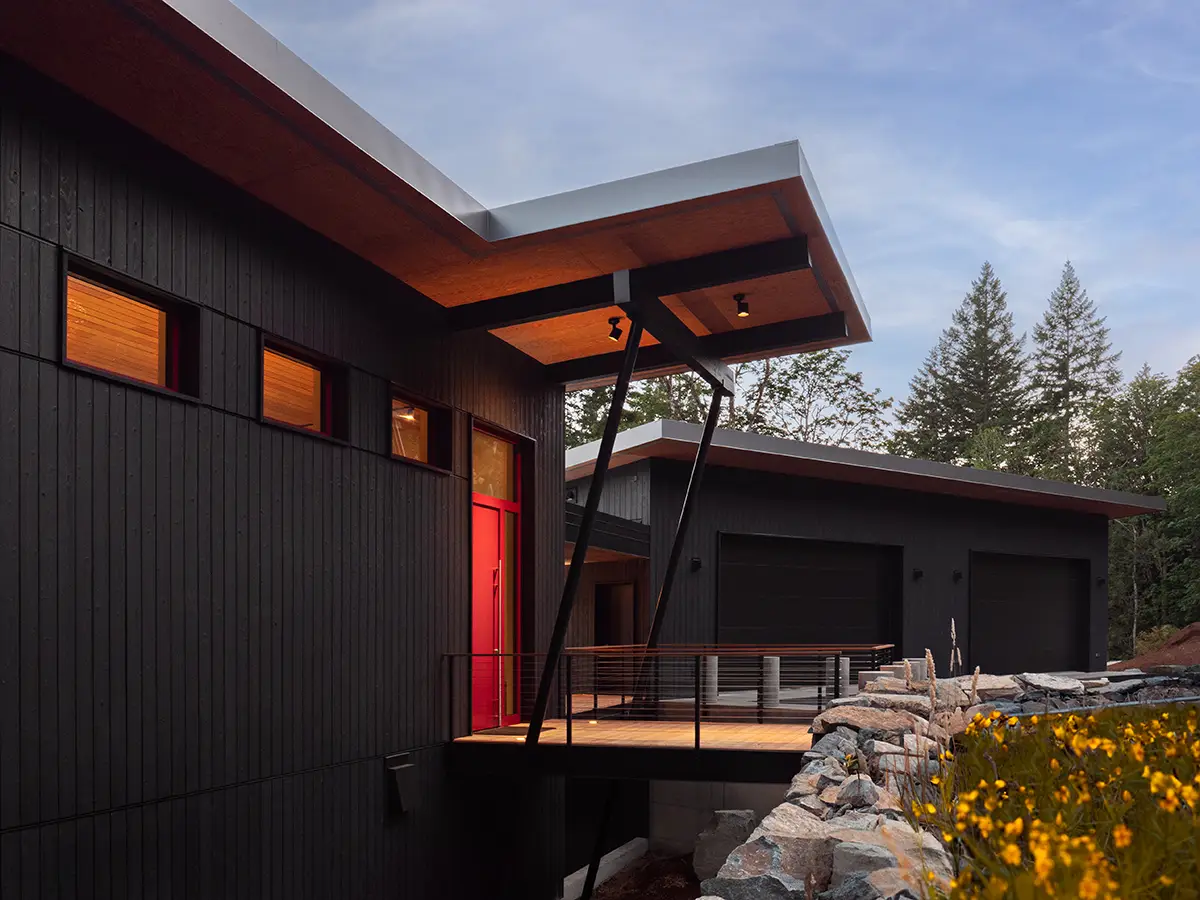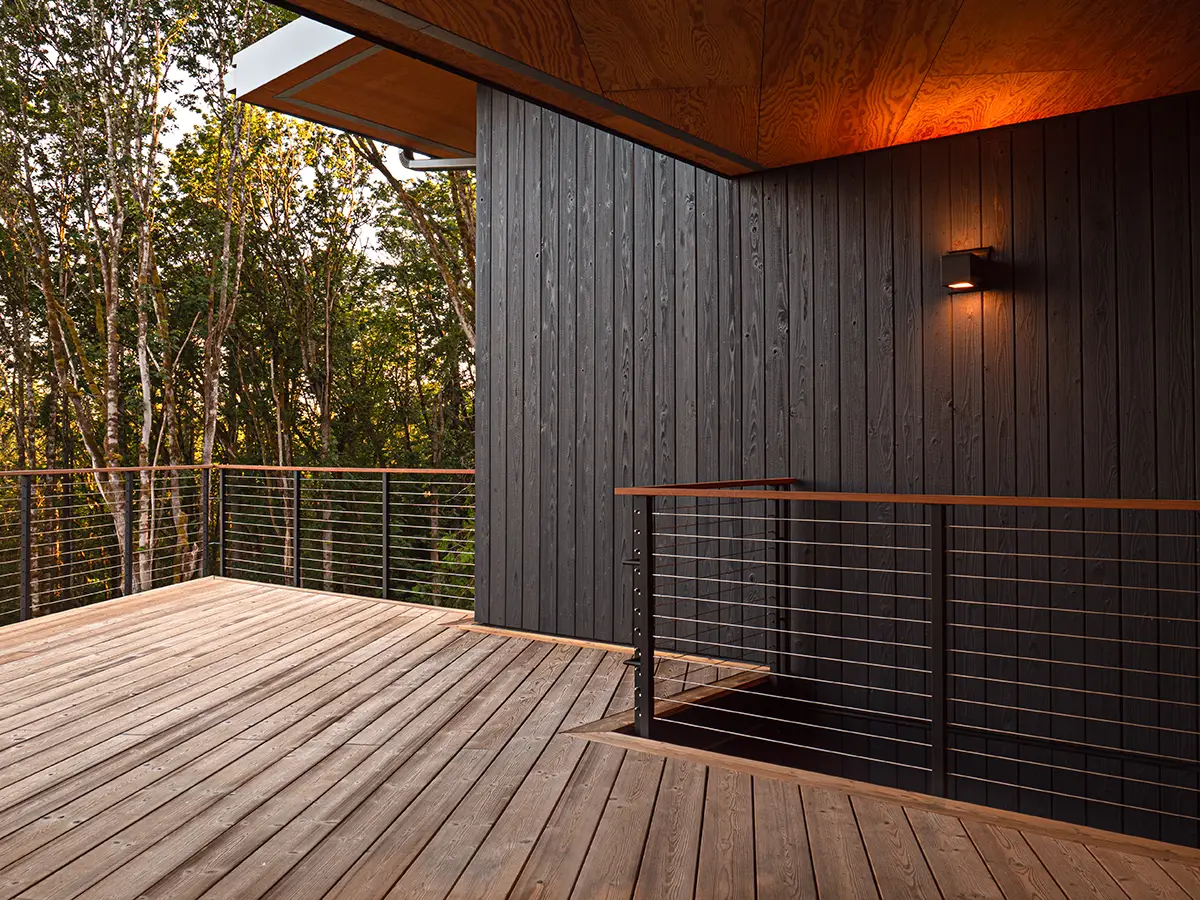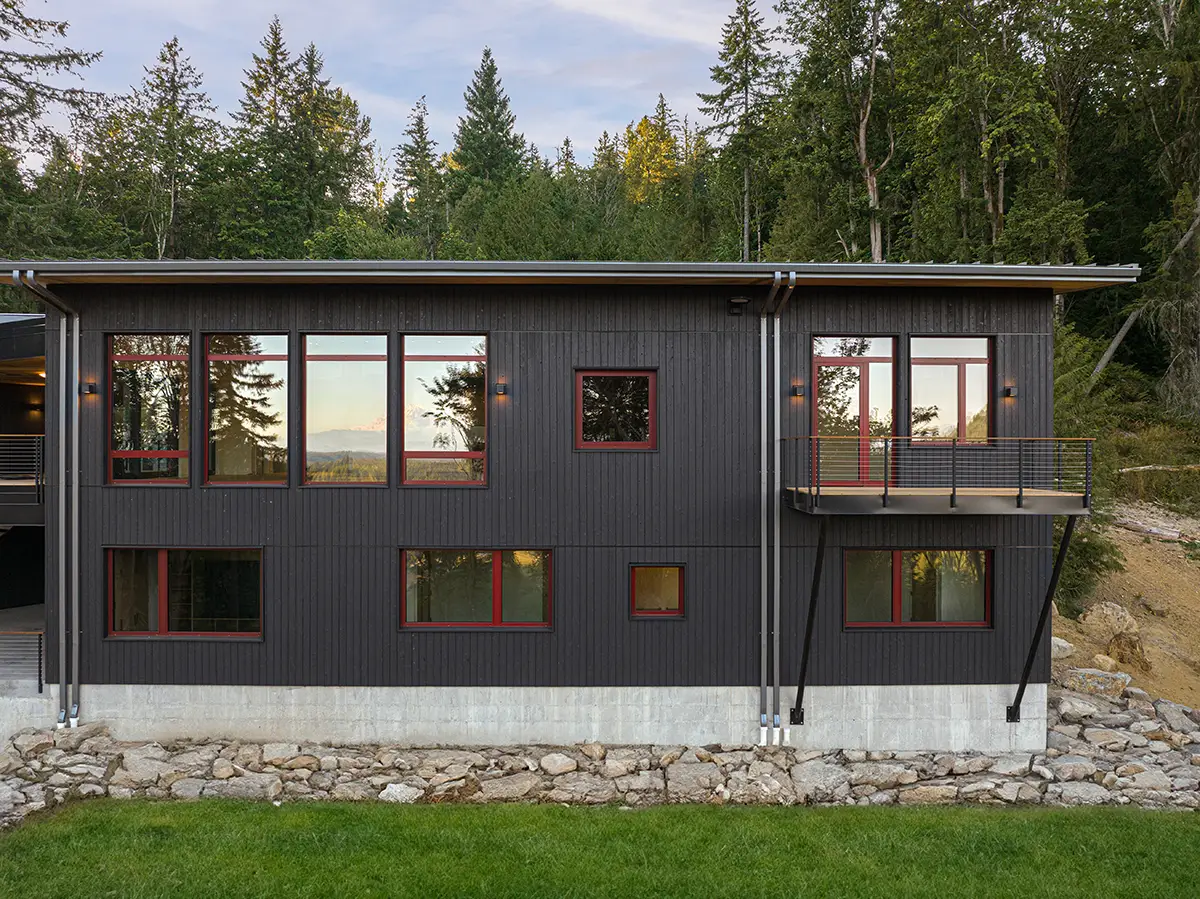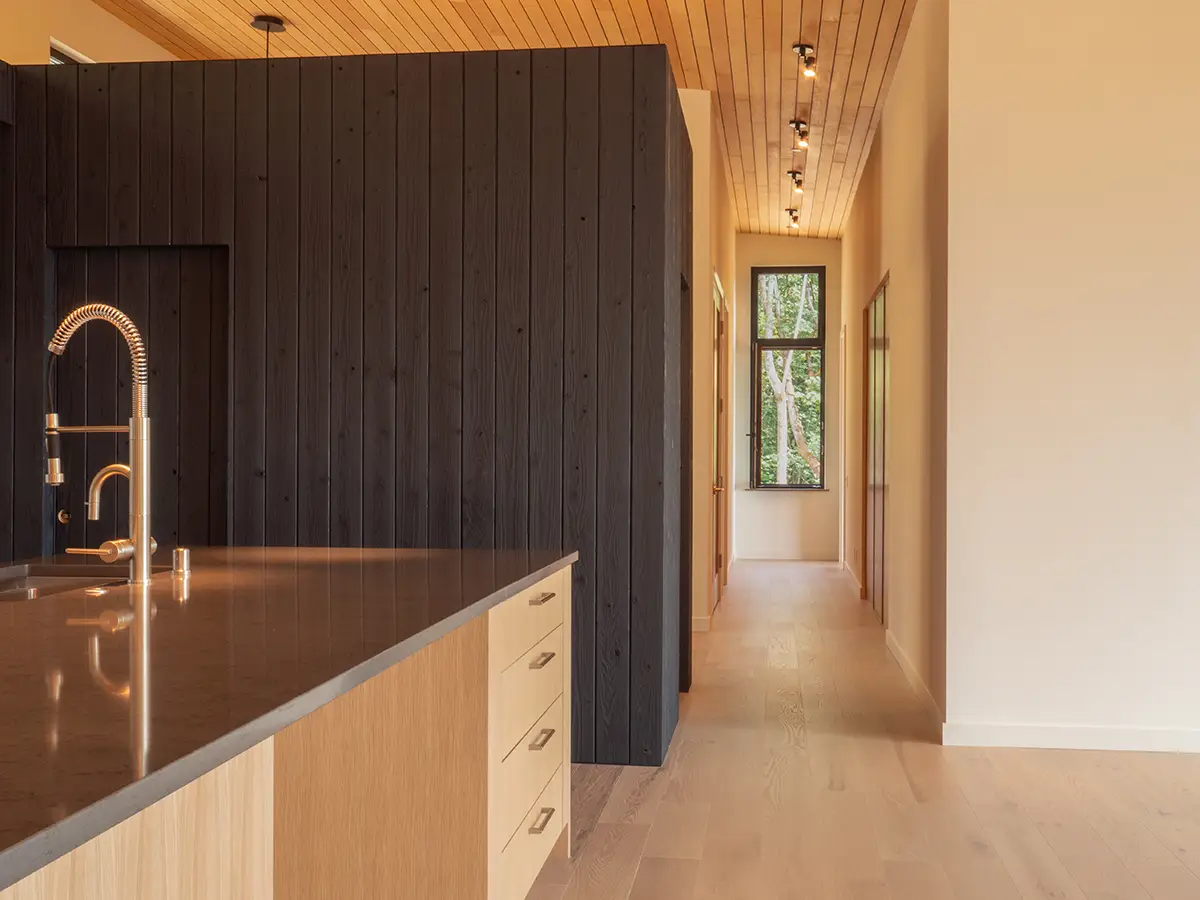Perched on the slope of Cougar Mountain, Washington, in the region known as the Issaquah Alps just 20 miles southeast of Seattle, the Issaquah Passive House is a meditation of modern, sustainable design.
Despite its impressive 3,750-square-foot volume, the two-story home quietly defers to the surrounding landscape, embodying the homeowners’ desire to live in harmony with the land. Their intent is written on the walls, all clad with Nakamoto Forestry’s yakisugi. This natural wood, made durable through traditional Japanese heat treatment, blends seamlessly with the surrounding trees.

Photo © Nakamoto Forestry, click to enlarge.
To bring their vision to life, the homeowners enlisted John Novak of Velocipede Architects and Jon Alexander of Sunshine Construction, both experts in sustainable design and construction. The home was built to Passive House standards, a rigorous design approach that ensures energy efficiency by maintaining consistent indoor temperatures with minimal reliance on external heating and cooling systems.
Beyond adhering to Passive House principles, the project team paid close attention to the material selection, ensuring that each choice not only aligned with their aesthetic vision but also supported their sustainability goals. When it came time to select the exterior cladding, Nakamoto’s yakisugi was an obvious choice.
“I had worked with Nakamoto's yakisugi on a previous project,” said Novak. “It’s a great product in terms of sustainability and durability, and it has a beautiful, natural texture. We didn’t consider any other facade material, if I’m honest.”
Often referred to as "shou sugi ban" in the West, yakisugi is a traditional Japanese technique that involves charring Japanese cypress, or "sugi," to preserve it. This centuries-old method combusts hemi-cellulose in the wood fibers, making the wood resistant to rot, fungus, insects, fire, and UV exposure—qualities that are particularly valuable for a home nestled in the wet wilderness of Washington.
Novak opted to use Nakamoto’s Gendai® yakisugi, which is lightly brushed after it’s been charred to remove some of the soot. The result is a smooth, dark surface with subtle burnt fiber crevasse shadows that highlight sugi’s natural, figured grain. An Alyd Oil Dark Gray stain was added to provide additional UV protection and color longevity.

Photo © Nakamoto Forestry
“The wood’s depth and darkness blend in with the surrounding nature,” said Novak. “That was our intent. We didn’t want the building to compete with the vegetation—we wanted it to be a backdrop to nature.”
The yakisugi was installed vertically, mirroring the tall trunks of the dense emerald forest that envelop the house. “This was my first time using this siding product,” said Alexander. “I’d seen small samples, but I didn’t fully appreciate its beauty until the entire wall was sided.”

Photo © Nakamoto Forestry
With an oil finish, Nakamoto’s Gendai yakisugi is also suitable for interior use, which presented Novak with the opportunity to draw a throughline from the exterior to the interior. He chose to wrap the kitchen pantry in the richly textured wood, dramatically contrasting the otherwise bright interior.


Photos © Nakamoto Forestry
“Our decision to use yakisugi was as much an aesthetic choice as it was a sustainability choice,” said Novak. “It was important to me—and to the homeowners—to use products that were durable and could withstand the test of time.”
To ensure the yakisugi's longevity, Alexander added a rainscreen beneath the siding, allowing trapped moisture to drain or evaporate quickly. This careful installation helps the wood last up to 100 years with minimal maintenance—an exceptional lifespan for a natural, non-engineered material.
Yakisugi’s durability is only one facet of its sustainability story—one that’s mirrored in its production. Nakamoto Forestry’s wood products are sourced from sustainably managed timberland in Western Japan, which has been owned and operated by the Nakamoto family since the 1920s. Rather than clear cutting, Nakamoto Forestry employs selective thinning techniques to protect the long-term health of the forests. Once harvested, the wood is air-dried and flash-burned, a process that is more efficient and less resource-intensive than conventional kiln drying.
“When I build a house like this, my goal is that the house will last 200 years or more,” said Alexander. “I think the siding is an excellent product for covering the skin of it.”
For more information on the benefits of yakisugi, visit www.nakamotoforestry.com.

Photo © Nakamoto Forestry
By William Beleck, President of Nakamoto Forestry North America
William Beleck launched Nakamoto Forestry North America in 2016 in Portland, Oregon, together with Nakamoto Zourin, the largest yakisugi “shou sugi ban” mill in Japan.






